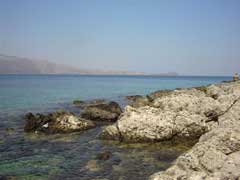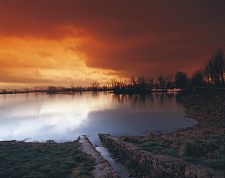 New Article on the Environmental Impact of the Bottled Water Industry
New Article on the Environmental Impact of the Bottled Water Industry
“The beverage industry has proven to be the cornerstone of the functional food revolution. Beverages are ideal platforms to deliver health [and] wellness, and in most cases [they] provide both experiential and convenient benefits to consumers,” says Peter Leighton, a recognized leader in both established corporate and start-up ventures with a focus in consumer products, biotechnology, nutraceuticals, functional foods and human nutrition, and subject-matter expert consulting through Zintro.com.
The bottled water industry, specifically, makes a significant contribution to the U.S. economy. A 2009 study sponsored by the International Bottled Water Association (IBWA) found that the industry contributes just under one percent of GDP, or $129.1 billion in output, including salaries and benefits, federal, state and local taxes and state sales taxes on the consumer side.
Bottled water sales slumped in 2008 and 2009 during economic low points but rebounded in 2010. Reports indicate a 4.5 percent increase in sales between 2009 and 2010.
Purified tap water makes up 59% of bottled water available, according to Unesco. The remaining 41% of bottled water is comprised of spring water and mineral water. Purified water comes from public sources, and is sometimes put through additional purification processes before being bottled and sold to the public.
Spring water is water collected from an underground spring flowing to the surface of the ground. Interestingly, you may have purchased two different brands of bottled spring water that have actually come from the same spring. Mineral water also comes from underground, and contains a consistent level of minerals and other elements. Bottled mineral water has not been purified, processed, or added to in any way.
Artesian water does not make up much of the bottled water on the market. It’s worth mentioning, however, because Fiji water, found to have high levels of bacteria in one study, is Artesian water. Artesian water comes from a well that taps an aquifer. Fiji water, according to New York magazine, comes from tropical rain.
| Contact information |
Stacy Gianakura, Content Development Specialist
(email: stacy@cornerstonecontent.com) |
|---|---|
| News type | Inbrief |
| File link |
http://blog.zintro.com/2011/09/24/bottled-water-and-vitamin-enhanced-beverages/ |
| Source of information | The official website for the International Bottled Water Association |
| Keyword(s) | Bottled Water Industry, Environmental Impact |
| Subject(s) | ANALYSIS AND TESTS , CHARACTERISTICAL PARAMETERS OF WATERS AND SLUDGES , DRINKING WATER , DRINKING WATER AND SANITATION : COMMON PROCESSES OF PURIFICATION AND TREATMENT , INDUSTRY |
| Relation | http://www.bottledwater.org/public/pdf/USAtoday_final.pdf |
| Geographical coverage | n/a |
| News date | 21/10/2011 |
| Working language(s) | ENGLISH |
 you are not logged in
you are not logged in





